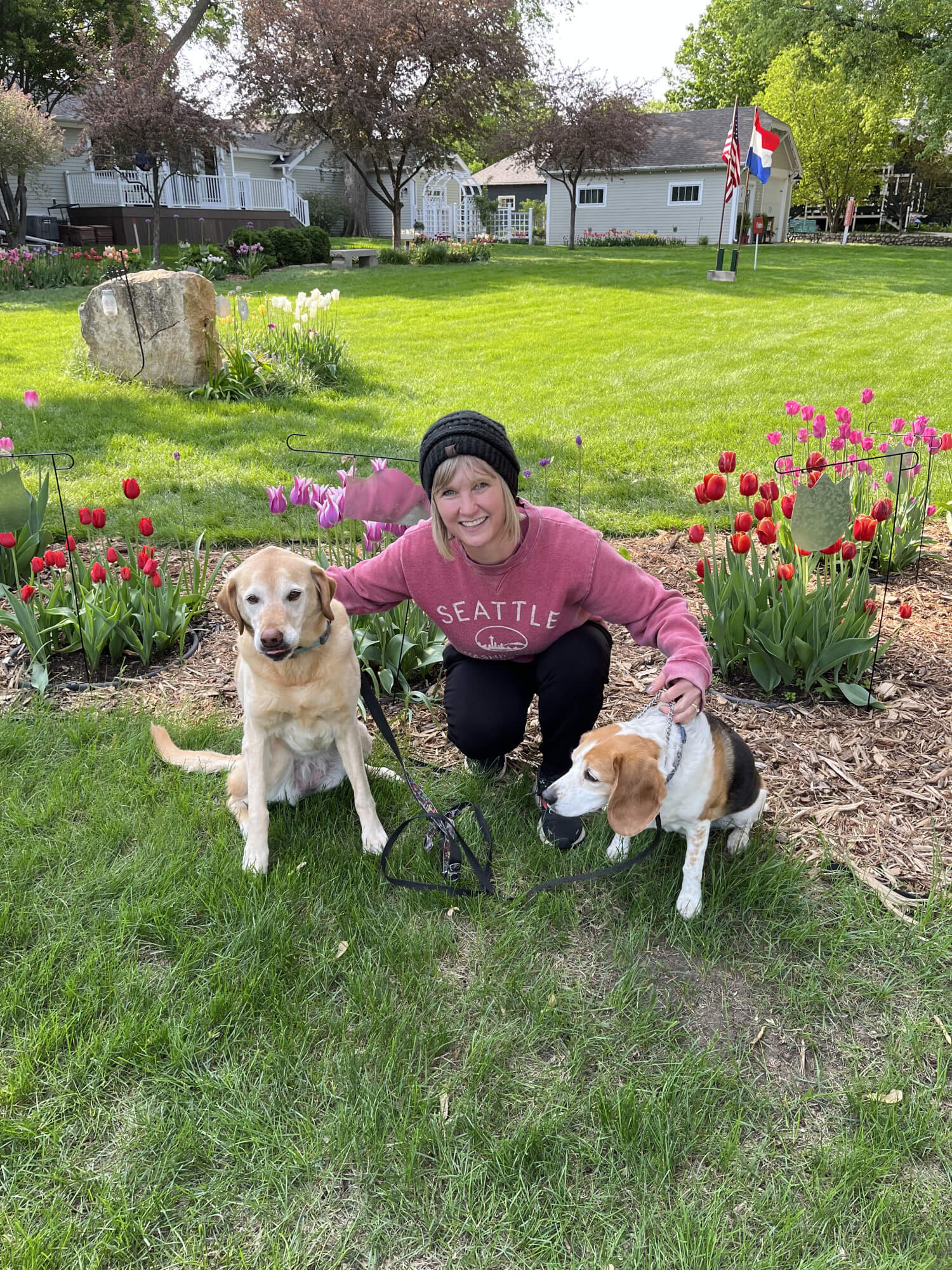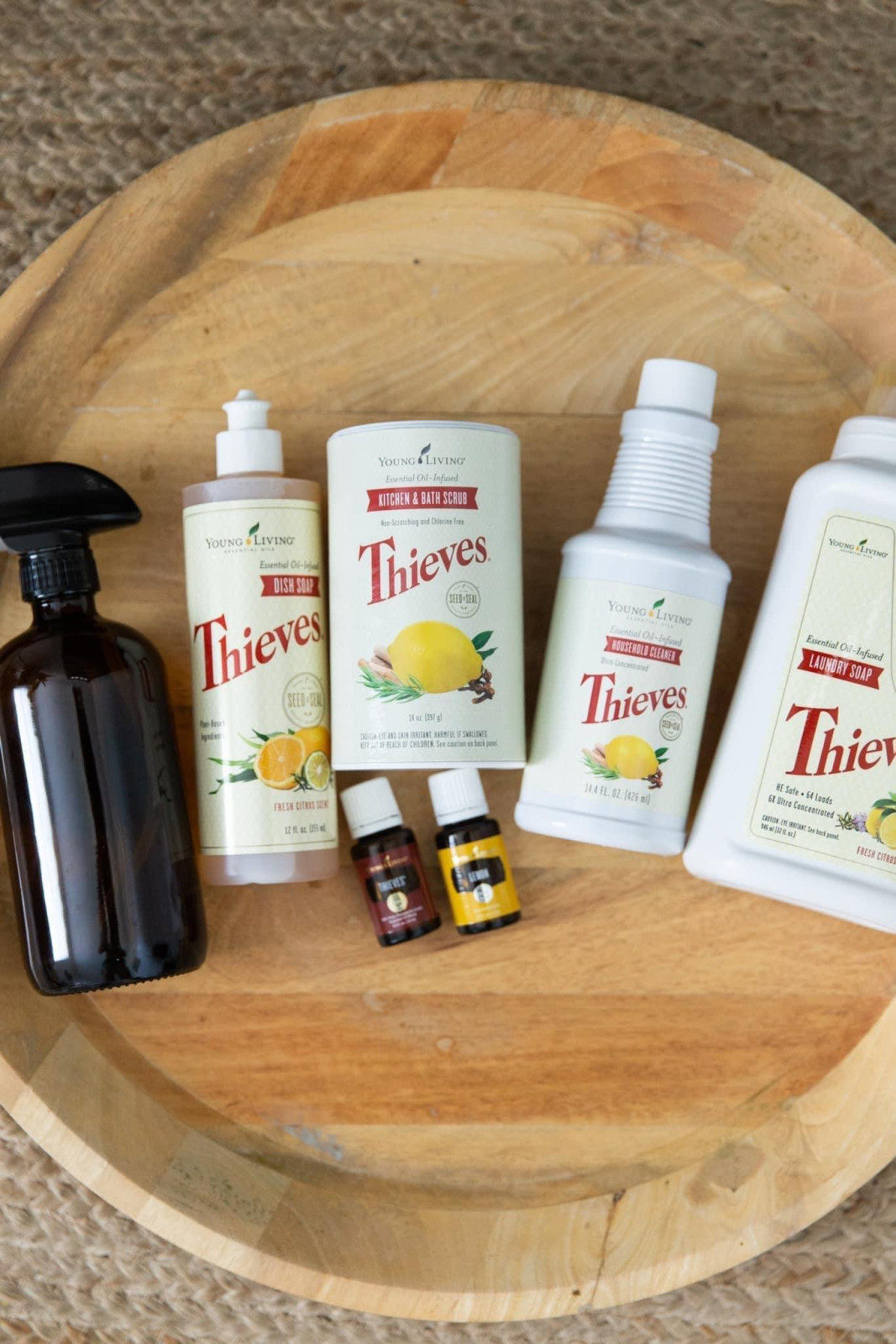
Did you know essential oils play a part in the Christmas story? They were such a natural part of everyday living, that it's not surprising. There are over 1,000 references to aromatics (oils, incense and ointments) in the bible alone. Not to mention the references in other ancient literature. The history fascinates me and the benefits of these oils have not disappeared. They can still play a big role in our everyday healthy living goals today. Sadly though, in this day and age, we’ve placed so much importance on modern man-made medicine (which of course has its own time and place) that we've strayed far, far away from the original pharmacy. It’s time to get back.
When reading the bible, we have to consider that there are certain things known at the time the bible was penned that did not need further clarification. However, through lost translations and lost traditions, today not everything is self-explanatory - including references on how they used essential oils. I point this out to say, the Bible is not a science book that tells us everything we need to know about essential oils. Rather, it offers more of a glimpse of the fact that they were indeed a part of everyday living and worshipping.
Follow along with me as I highlight some of the amazing history and significance of aromatherapy. In the spirit of Christmas, I've chosen 12 essential oils to talk about. Let these oils take you back in time.
An Act of Hospitality
Imagine this: You get word your cousin Peter is coming to visit for the holidays. When he arrives, he walks in dusty and dirty. He has blisters and sores on his feet. Unfortunately, his car broke down five miles outside town and it was mainly gravel roads from there to your home. To make matters worse, his cell phone died and he couldn’t call for help. So, he grabbed his bag and walked the distance.
If this really did happen, naturally, you would offer him a comfortable bed and a hot shower. You may even offer him some ointment for his wounds.
But, did you know, it was an act of hospitality to apply essential oils to the feet of your guests? It soothed the cuts and bruises from traveling and acted as a deodorant. There were no hot indoor showers. Instead, you used the refreshing aromas and soothing properties of essential oils to comfort and care for your guests.
Isn't that something! Now, I’m not suggesting you forgo the use of baths and showers, but you can add some essential oils to the mix. For example, if you have guests coming, alongside offering them your best accommodations, fill your diffuser with peace and calming or stress away. Have it be the first thing they encounter when they walk through your door. Create an oasis. The tiny essential oil molecules will rise in the air and fill your home and senses. Offer lavender for tired and sore feet- and a good night’s rest.
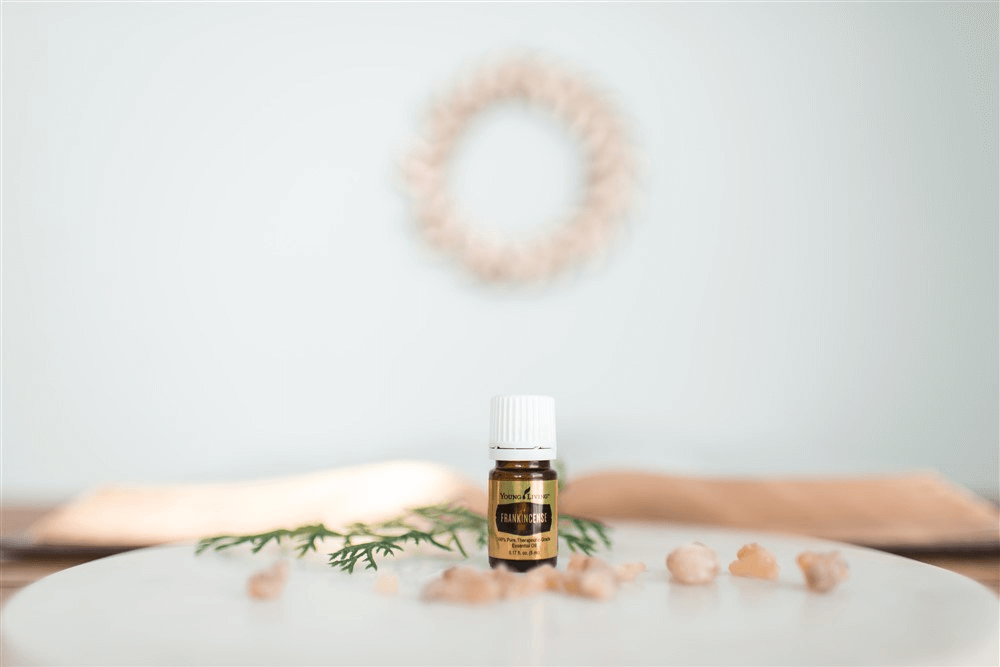
Day 1-Frankincense
What’s your go-to gift at a baby shower? If you have one, it may be something like diapers, onesies, ointments. Usually something practical. What about FRANKINCENSE and MYRRH. Probably two of the most known oils of scripture. Have you ever stopped to think about why they were given as gifts to Mary and Jesus?
The power of FRANKINCENSE was known in antiquity. It was the most sought after commodity in the world for thousands of years, worth 9x the value of GOLD. You, like myself, probably would assume the gift of gold was the most costly of the three gifts given to baby Jesus. It wasn’t. Frankincense was. Historically, people used it for everything. The Egyptians said that it could be used from “head to toe”. I use it today for skin care, immune health and grounding.
It's also a part of the Holy Anointing oil in Exodus and used to anoint new born kings and priests.
My favorite way to use FRANKINCENSE is to put it in my diffuser along with Thieves and Lavender. This trio helps to calm, ground and support your immune system to do it's job. It's also great for skin care. Adding a drop to my moisturizer smoothes things out.
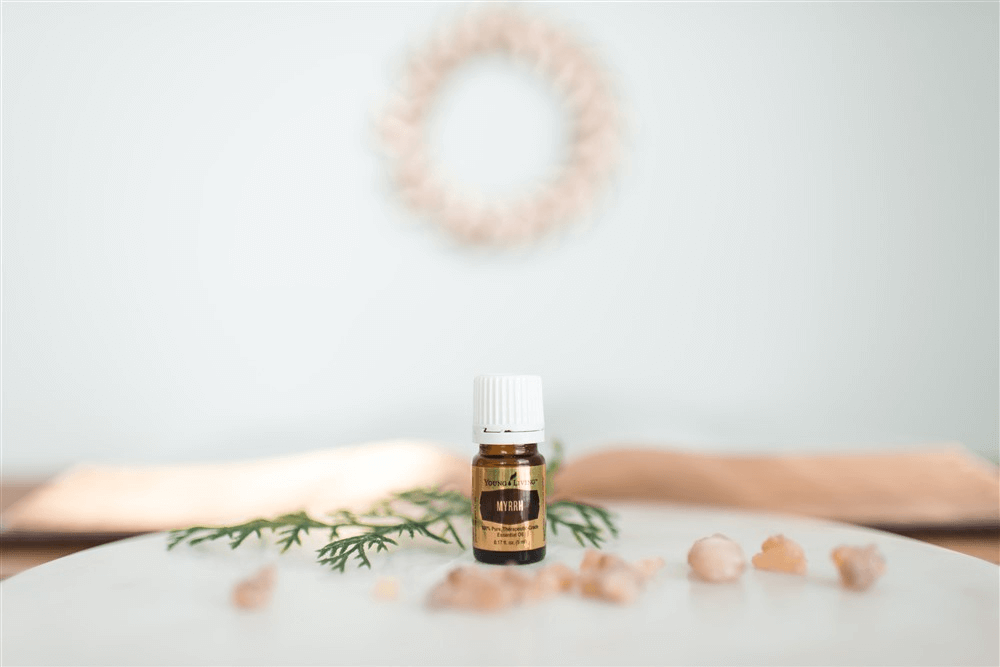
Day 2-Myrrh
MYRRH, one of the key ingredients in Moses' holy anointing oil, it was highly regarded by Biblical figures such as David and Solomon (Proverbs 7:17). It’s the MOST mentioned oil in the Bible. The oil of Myrrh has an emotional effect, and aromatherapy history tells us that it helps make those who inhale it feel secure. It was historically known for calming emotions. And get this. Queen Esther bathed in this oil for 6 months as a beauty treatment.
This precious oil is obtained from the resin of the tree trunk, and it belongs to the same family as frankincense. Historically, pregnant mothers used it after childbirth and on their newborns' umbilical cord. MYRRH was also commonly used to embalm bodies. It was present at Jesus’ birth, death and burial. According to the book of John, Nicodemus and Joseph of Arimathea brought myrrh and aloes to prepare Jesus’ body for burial. It may have been for ALL of these reasons that MYRRH was brought to Mary and baby Jesus.
Sounds like a meaningful and practical gift to me.
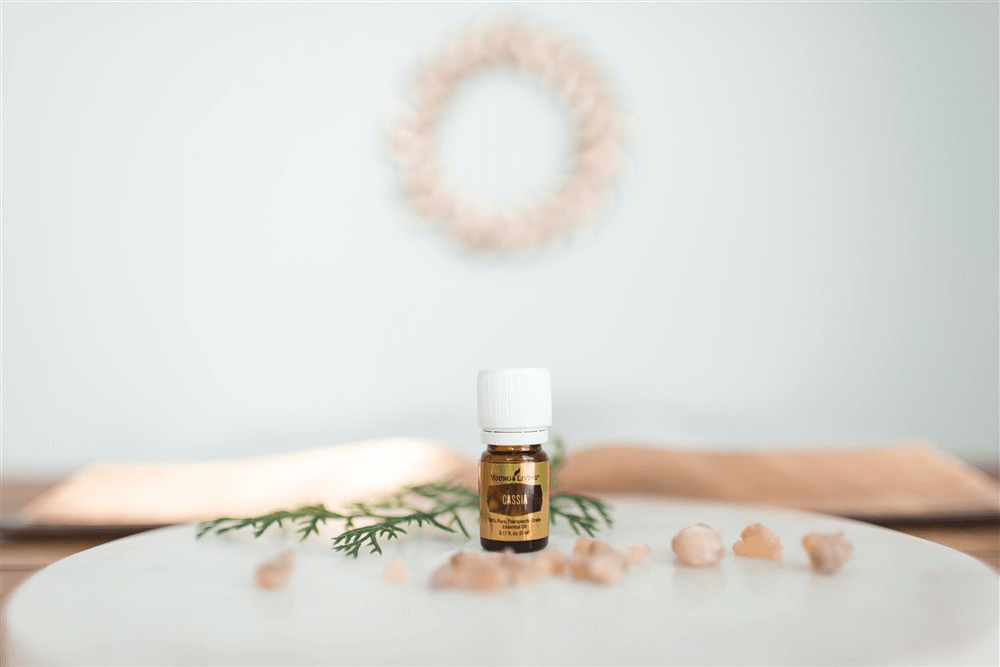
Day 3 -Cinnamon and Cassia
What do you think of when I say CINNAMON? I think of apples. Apples and cinnamon. It's a classic combo in my book. There’s nothing like the aroma of a warm apple pie filling your home and cinnamon plays a major role in this comforting food.
Before telling you more about the history of CINNAMON (and CASSIA), let me pause here and point out that your sense of smell is directly connected with your limbic system, the emotional seat of your brain. So, any aromas you breathe in affect how you feel. That being said, when I opened my first bottle of cinnamon bark essential oil, I had all the happy feelings. You have not truly smelled cinnamon until you’ve opened a bottle of YL’s cinnamon bark essential oil.
The most ancient of spices, CINNAMON, comes from a slender evergreen tree which grows up to 20 feet tall. Rich in biblical history, it is part of the holy anointing oil recipe given to Moses. It is also mentioned in one of the oldest known medical records, the Ebers Papyrus, dating from the 16th century BC and was highly profitable in the Dutch East India Trading Route.
Then there’s cinnamon’s cousin, CASSIA. While its aroma is very closely related to cinnamon, the chemical properties are quite different. Cassia has a slightly sweeter taste and aroma. It’s mentioned three times in the Bible- all in the Old Testament. It was a key ingredient in the incense used in temple worship; it was also used as the anointing oil and the oil that burned daily in the temple lamps. It dates back to Egyptian times being used during mummification.
Psalm 45:8 “All the thy garments smell of MYRRH, ALOES and CASSIA. Out of ivory palaces, whereby they have made thee glad.”
These days, cassia is known for its unmistakable fragrance and calming aromatic properties. I adore it, often choosing to diffuse it with grapefruit or another citrus oil. I also like to add a drop or two of this sweetness to my hot cocoa. Forget the artificial flavorings. Essential oils provide the real thing.
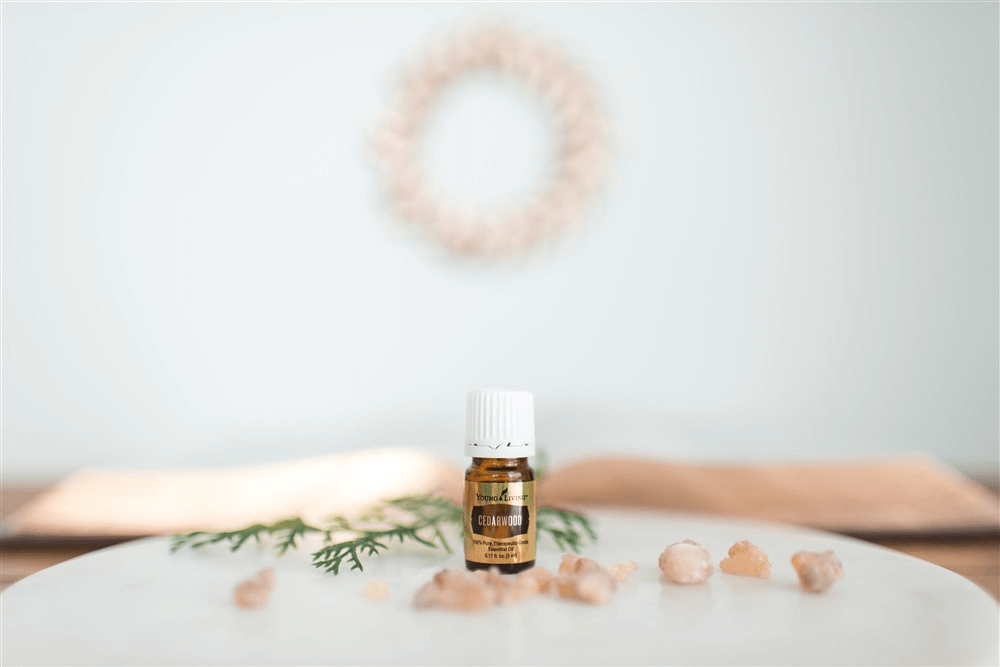
Day 4-Cedarwood
This time of year, we all need extra sleep. December days can easily be filled with festive activities - parties, wrapping presents, whipping up delectable desserts, and adorning the house with decor that only comes out once a year. Although fun, these activities can be quite exhausting. Enter cedarwood essential oil. CEDARWOOD has a warm, woodsy aroma that creates a comforting, uplifting experience. It has been my go-to oil for all things sleep. Along with peace and calming and lavender, I often use CEDARWOOD to support a good night's rest.
Interestingly enough, CEDARWOOD is also good for clarity and focus. It’s smart like that. With so many different molecules, it can address many needs in your body. Put a drop on your thumb and press it against the roof of your mouth. Then stand back and be amazed at how much clearer your thinking is.
As for history… This versatile wood is mentioned 21 times in the Bible. The wood was used to build Solomon’s beautiful temple and it was known for its durability and aromatic oil content that lasts indefinitely. The choice was no doubt intentional. The ancient Egyptians used CEDARWOOD oil for musical instruments, coffins, embalming, perfumery, and in cosmetics. It is the oldest distilled oil on earth.
It’s easy to overlook references to CEDARWOOD and the cedars of Lebanon and not understand the significance, but people in ancient history would have valued what these trees had to offer. They looked to nature to provide, and it did not disappoint. It still doesn’t.
Day 5- Valor
On this day fifth of The Twelve Days of Essential Oils in History, I’m going to veer off course a little. I want to tell you about a blend called VALOR which isn't as ancient as all the others I’ve mentioned. The individual oils are, but the uplifting, earthy aroma blend we’ve come to know and love as VALOR hasn’t been around for more than 30 years. It's a Young Living original and a fan favorite. And rightly so. It’s a powerful synergistic blend with a transformative aroma. It’s brought me through some low moments. I like to combine it with orange and frankincense, although it’s perfect on its own too.
But… and this is a big but, even though the blend hasn’t been around since the dawn of time, it WAS inspired by history. Historical writings tell us Roman soldiers were said to apply and bathe in plant extracts and botanicals to instill feelings of courage and confidence before going into battle. It’s because of that, this blend is lovingly referred to as “liquid courage in a bottle.”
What makes VALOR so great? I’m glad you asked. Each essential oil in the blend was carefully selected for its unique aromatic and topical benefits: Frankincense for its uplifting, earthy aroma and skin-smoothing properties; Black Spruce for its grounded, woodsy aroma; Blue Tansy for its inspiring aromatic profile; Geranium for its sweet, floral aroma; and Camphor Wood for its skin-benefiting properties and strong, herbaceous scent.
I’m always a fan of diffusing VALOR, but if you want another idea, simply open the bottle and put a drop on your wrist and breathe in its goodness. I often make a roll-on with this blend too. I put a few drops in an empty roller bottle and add a carrier oil, like sweet almond oil or jojoba oil. Now, it's ready to throw in your bag to use anywhere, anytime for those moments you need a little extra courage.
They say to learn from history because history repeats itself. I think it’s high time we start paying attention and repeating this part of our history. Who needs some Valor in their life?
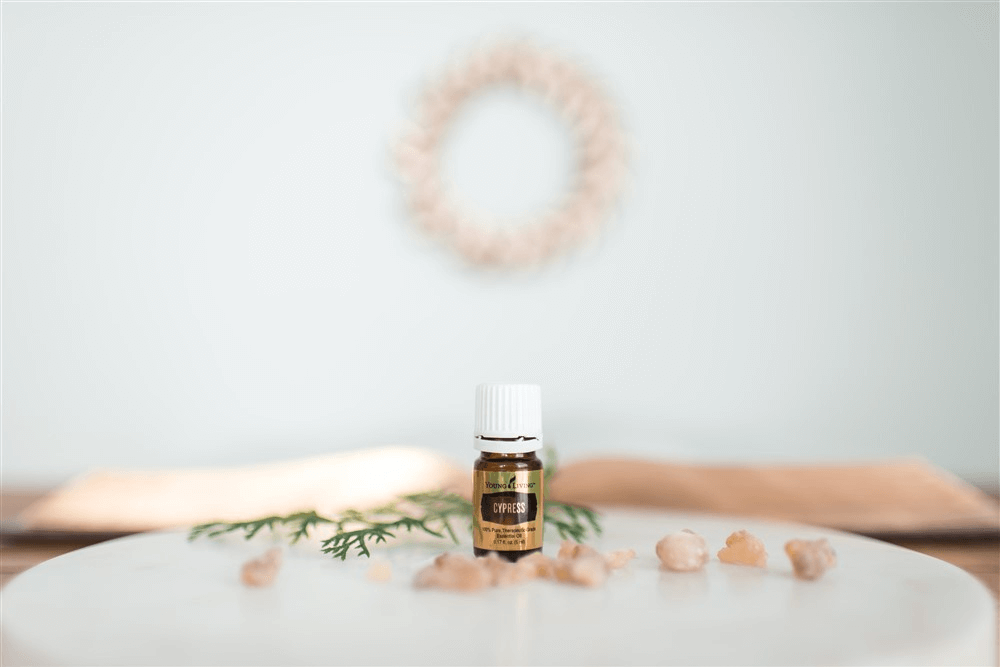
Day 6- Cypress
“He cut down cedars, or perhaps took a CYPRESS or oak. He let it grow among the trees of the forest, or planted a pine, and the rain made it grow.” Isaiah 44:14
A CYPRESS tree has wood so durable that the cypress doors of Rome’s St. Peter’s Basilica show no signs of decay, even after 1,200 years. It’s mentioned five times biblically in the Old Testament. The tree was used mostly for its wood as it was strong and durable. Noah used it to build the ark. Greeks and Romans used it for relieving upset tummies.
CYPRESS has a fresh and herbaceous aroma. It can be grounding and energizing at the same time when diffused. It can help restore feelings of security and stability. It’s great to encourage circulation.
Common uses include adding a drop to your moisturizer to increase the radiant look of your skin, diffusing 4-6 drops to increase motivation and mixing drops of CYPRESS with a carrier oil and massaging your legs to get the blood flowing and your energy and motivation up before a run or other exercise.
Fun Fact: CYPRESS is an evergreen that is used frequently in landscaping. I bet you see it all the time and had no idea that it was a Cypress. Search for an image so you can spot it as you drive by homes!
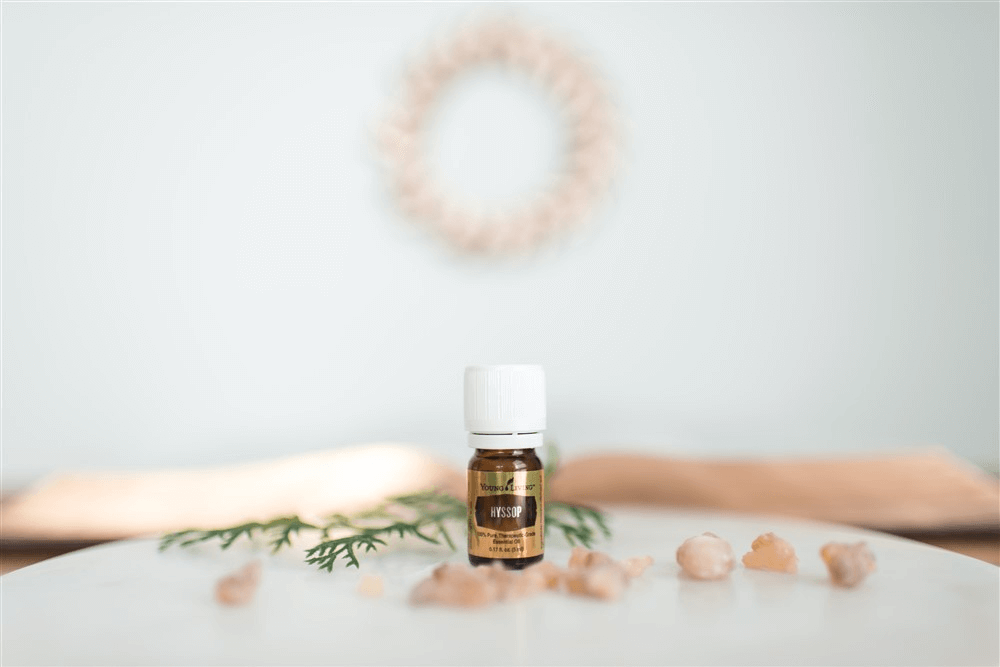
Day 7- Hyssop
Exodus 12;22 God instructed the Israelites to strike the lintel and doorposts with HYSSOP branches. The oils of the leaves would have been released as they used it to apply the blood of the lamb over doorposts during the first passover. The Hebrews believed the scent of hyssop would repel evil spirits. We talk about the blood of the lamb saving the Israelites, and rightly so, but it sounds like to me that God gave significance to the hyssop as well.
“Cleanse me with HYSSOP, and I will be clean; wash me, and I will be whiter than snow” Psalms 51:7
The 12 Biblical references to the HYSSOP plant indicate it was likely used in practices and rituals intended to purify and cleanse. It has a slightly sweet scent and was considered a sacred oil in ancient Egypt, Israel, and Greece and is in the same family as mint. This plant was used in traditional and herbal practices for centuries to promote wellness.
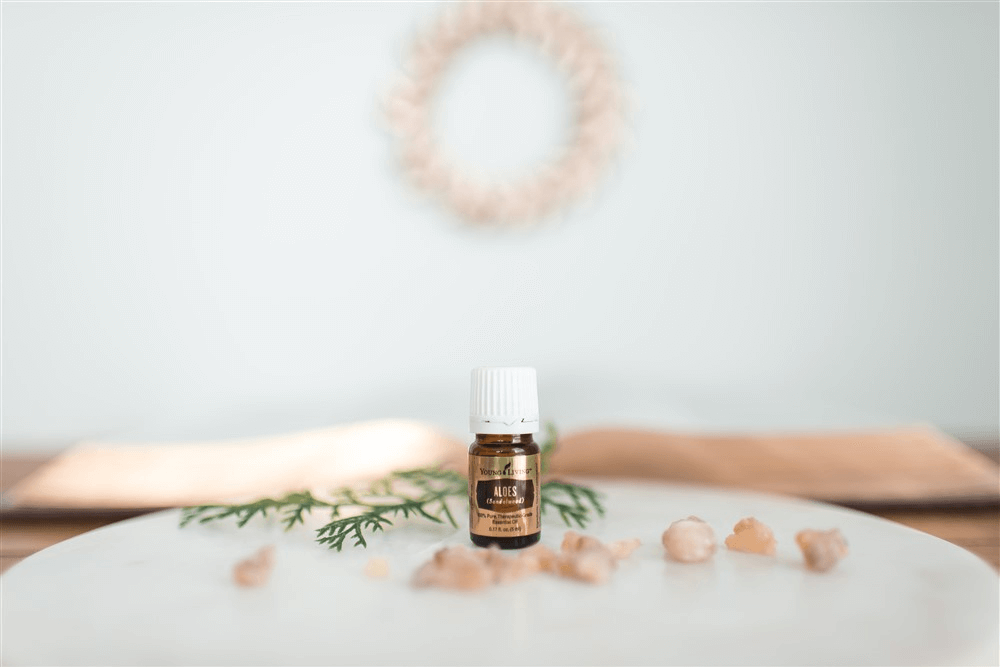
Day 8- Sandalwood (Aloes)
AHHH…SANDALWOOD. You are sweet, soft, woodsy, balsamic and slightly musky. If you’re looking for a cologne or perfume that isn’t filled with synthetic and hormone disrupting additives, look no further. Long before industries took over, humankind looked to nature to smell nice. And for good reason. Today, every scent you find today in shampoos, candles, room sprays, etc... is just trying to mimic nature. Why? To save money and make money. You can’t patent plants, but you can patent a lab made version. and you can hide ingredients under the umbrella word "fragrance." Sadly, it comes at a price. The ingredients do more harm than good. Some are toxic. Some mess with your hormones. A lot of sensitivities to smells are a reaction to the artificial, harmful chemical filled products that line the store shelves.
Thankfully, not Young Living essential oils. They harvest and distill with care the very plants and trees God put on the earth for our healing. The plants we encounter and enjoy in God’s great big world are so aromatic AND so very good for us. Reactions or sensitivities are rare when you are careful about the aromas you are using. Quality is everything.
SANDALWOOD is similar to frankincense in action. It’s the most valuable tree in the world. It takes 40-60 years for the tree to reach its peak and is one of the most potent smelling botanicals in the world. It shouldn't surprise you to learn it was popular as a men’s cologne. mentioned. (Who needs Old Spice when there’s something 100 times better?) Historically, sandalwood was known to help improve the function of the lymphatic system, strengthen the heart, and calm nerves.
A few other interesting facts:
-King Tut's tomb was filled aloewood and sandalwood oil in alabaster jars
-Egyptians burned sandalwood to sleep
-King David loved to use it on his body after battle for his scars
-Nicodemus brought a mixture of aloes and myrrh for Jesus’ body
-Young Living sandalwood in Hawaii must be 90% dead before it’s harvested
-It cost $200,000 for 75 lbs!
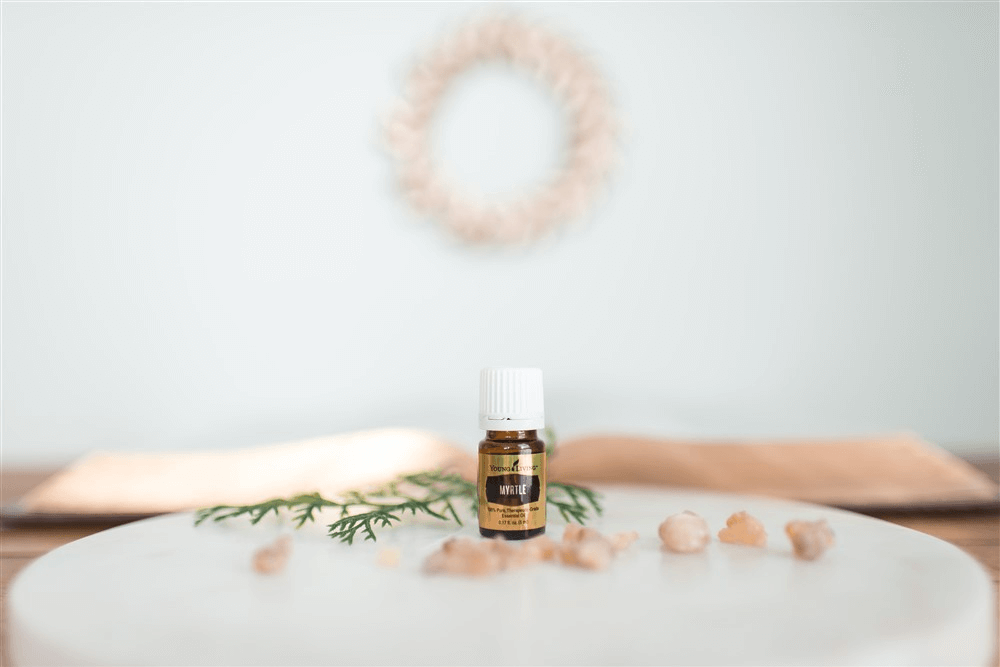
Day 9- Myrtle
“I will put in the wilderness the cedar, the acacia tree, the myrtle… ” (symbolizing restoration and flourishing) Isaiah 41:19
“Instead of the thorn shall come up the fir tree, and instead of the brier shall come up the myrtle tree…” as a symbol of transformation and blessing. Isaiah 55:13
The MYRTLE plant is native to the Mediterranean region and is distilled from the leaves.
Myrtle, known in Hebrew as hadas, is a symbol of restoration and blessing woven throughout Scripture. Mentioned in Nehemiah 8:15 and Isaiah 41:19, myrtle branches were used during the Feast of Tabernacles to celebrate God’s provision and renewal. Myrtle is associated with renewal, restoration, divine blessing, and in some interpretations, with joy and flourishing where there was barrenness. It has been a symbol of peace and justice for the Jews. Isn't that beautiful? I just love how God speaks to us through his creation.
Beyond its symbolism, the leaves were used in early herbal remedies for respiratory and skin support, and its pleasant aroma was a natural choice for purification and celebration. Today, the gentle, uplifting scent of myrtle essential oil continues to embody that same message of renewal—reminding us that even in seasons of weariness, new life can take root and thrive again. We use it for its purification properties. It has a soothing effect on respiratory system, supports the immune system. It's an especially good essential oil to have around for colds and sinus issues.
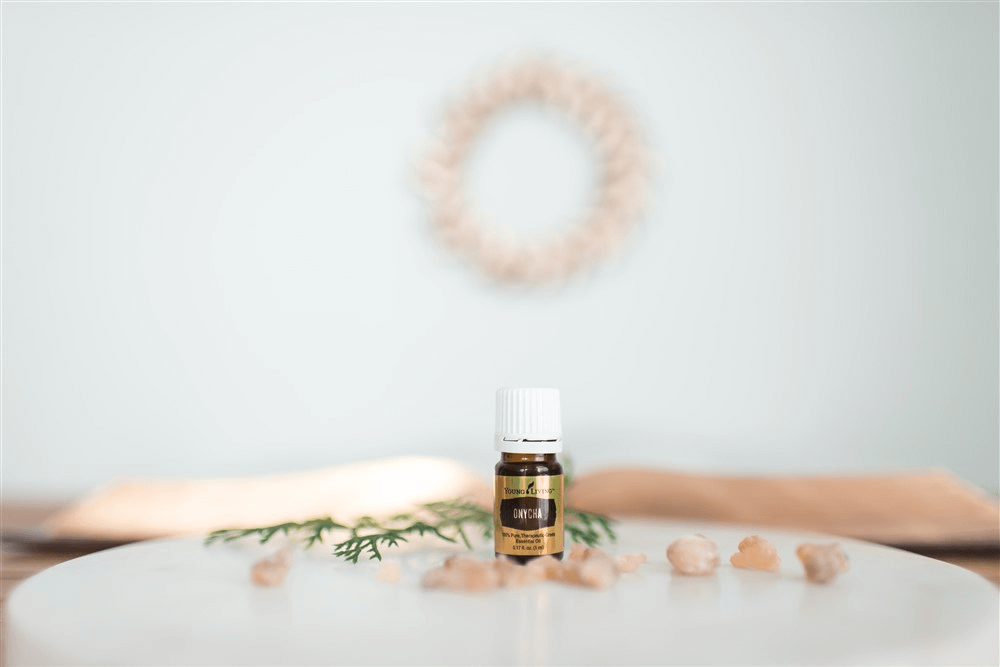
Day 10- Onycha
“Take unto thee sweet spices, stacte, and onycha, and galbanum; and pure frankincense…” (KJV)
Onycha was an ingredient in the “pure and holy” perfume or incense the Lord commanded Moses to make. (Exodus 30:34).
Onycha is one of the lesser-known but deeply fascinating oils mentioned in Scripture. Referenced in Exodus 30:34 as part of the holy incense used in the Tabernacle, Onycha (Hebrew shecheleth) added a rich, warm note to the sacred blend that represented prayer and worship rising to heaven. Its exact source has been debated over time—some scholars link it to the operculum of a sea snail found in the Red Sea, while others believe it refers to the sweet resin of the rock rose plant, also known as labdanum. Whatever its origin, Onycha was valued in ancient cultures for its fixative properties in perfumes and incense, helping scents linger longer and creating a grounding, calming aroma. Beyond its sacred use, Egyptian and Mediterranean traditions prized similar resins for their purifying and skin-supportive qualities. Today, Onycha reminds us of the importance of sacred spaces—both in our homes and within ourselves—and how aroma has always played a role in connecting the physical and spiritual, calming the heart, and uplifting the spirit.
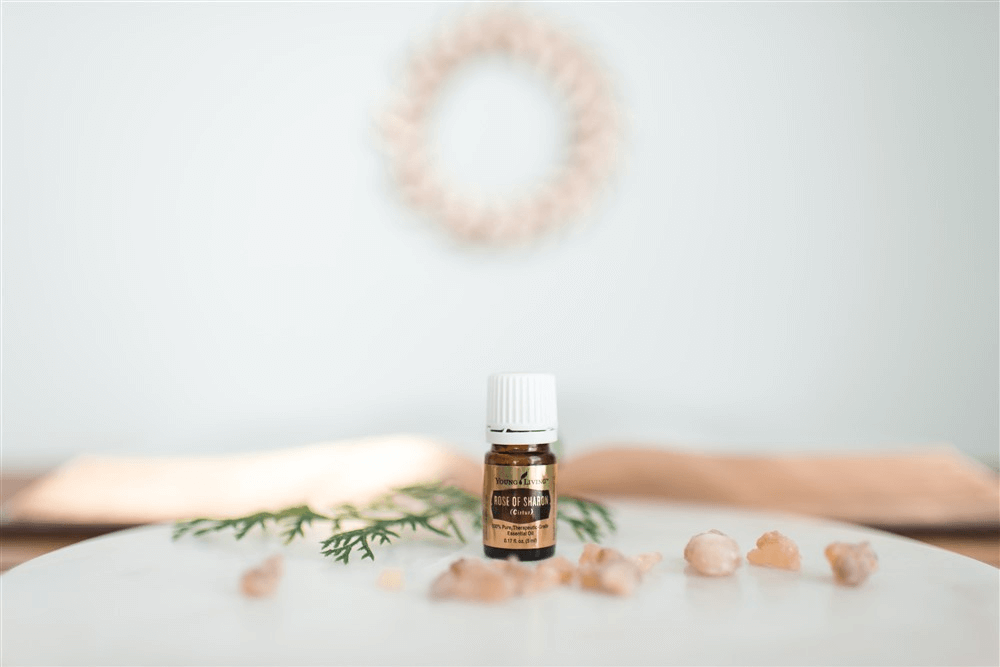
Day 11- Rose of Sharon (cistus)
The ROSE OF SHARON appears in Song of Songs 2:1: “I am the rose of Sharon, and the lily of the valleys.”
While scholars differ on the exact plant the verse refers to, many believe it points to the CISTUS, or rock rose, a Mediterranean shrub known for its beautiful blooms and fragrant resin called labdanum. This resin was treasured in the ancient world—used in Egyptian temples, early perfumes, and sacred incense for its rich, amber-like aroma. In Scripture, the Rose of Sharon symbolizes beauty, love, and life blossoming in unlikely places—a picture of hope emerging from the desert. Cistus essential oil, often associated with the Rose of Sharon, carries that same comforting depth and grounding warmth. It’s a scent that reminds us of God’s ability to bring beauty from barrenness and to fill even the driest seasons of our lives with fragrance and renewal.
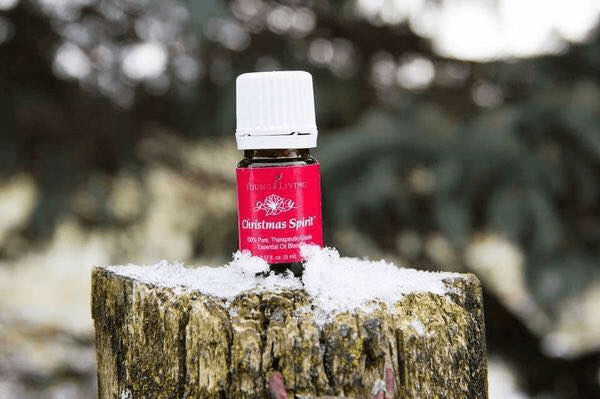
Day 12- Christmas Spirit
I couldn’t wait to tell you about this blend! It’s a combination of northern lights black spruce, orange and cinnamon bark essential oils. This now classic favorite, captures the aromas of Christmas so well- evoking memories of joy, happiness, comfort, and security.
That’s not to say it can only be used at Christmas time. Step outside the box and diffuse anytime of the year. I like to add at least 10 drops to my thieves essential oil-infused household cleaner. The cleaner already smells amazing with cinnamon, lemon, eucalyptus, rosemary and clove, and the CHRISTMAS SPIRIT complements it well. What I love about this is, wherever I clean, I leave a trail of aromatherapy behind. The cleaner and the smell of these oils cleans the air and all the surfaces it touches.
Another idea is to make a room spray or a tree spray. This Is especially nice if you have an artificial tree, but still want the aroma of evergreen. Add as many drops as you’d like (no real recipe, let your nose guide you) to a glass spray bottle. Fill with water and be sure to shake every time you use it. Spray the air, the tree, the furniture and blankets. Even spray your dog if she gets too stinky! (Just keep it out of her eyes.)
As far as history goes… Orange essential oil has a bright aroma that is believed to bring joy, peace, and happiness to those who possess it. It’s sunshine in a bottle. Cinnamon Bark essential oil is the oil of wealth from the Orient. (I touched on this oil in an earlier post #day4) Black Spruce essential oil has an aromatic influence that brings a feeling of balance and grounding.
As you explore each of these beautiful oils and their rich history, my hope is that they add meaning, comfort, and a deeper sense of connection to your season. Aromas have a way of grounding us, stirring memories, and reminding us of what truly matters—peace, presence, and the simple joys that make this time of year so special. Whether you're using these oils for reflection, supporting your wellness, or creating a cozy atmosphere at home, may they bring warmth and light into your days.
If this sparked your curiosity and you’d love to weave these oils into your daily rhythms, this bundle is a beautiful place to start. It’s an easy way to bring the benefits, meaning, and comfort of these oils into your home—one simple step at a time. Oils of Ancient Scripture


